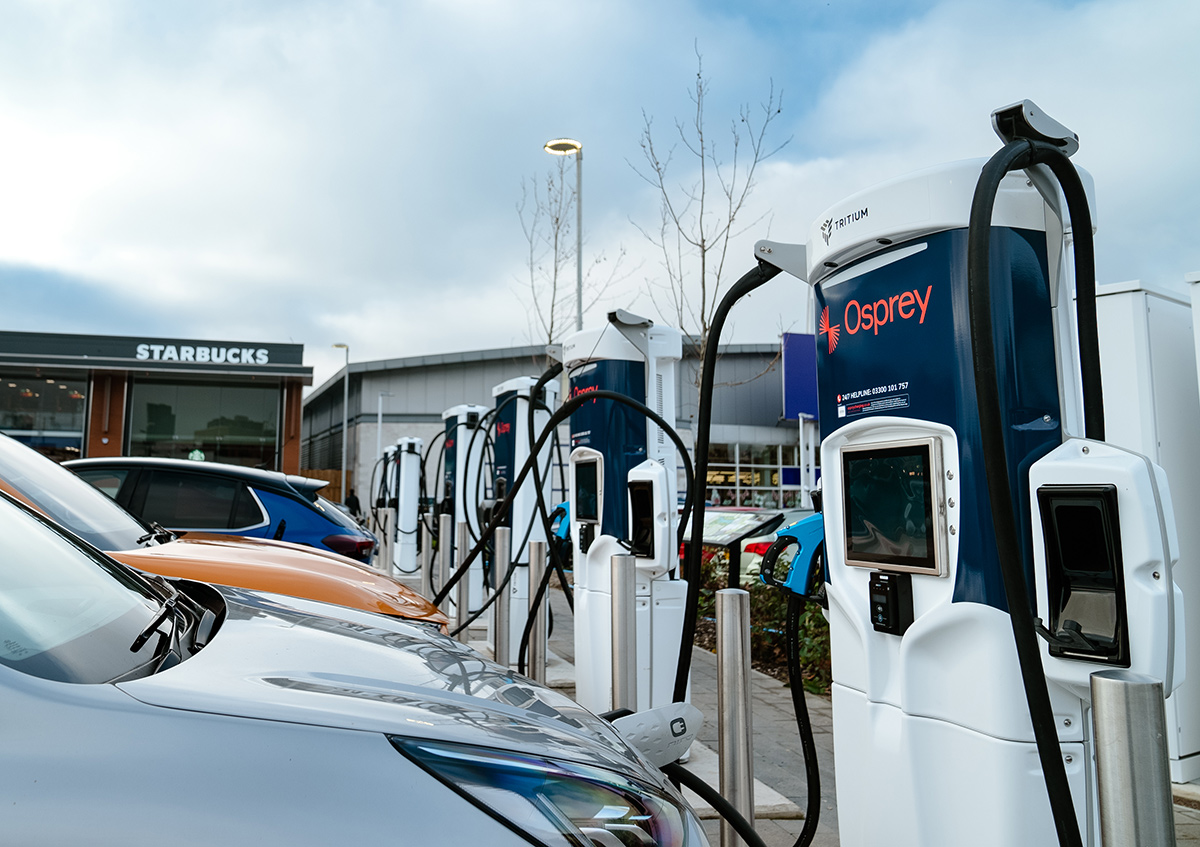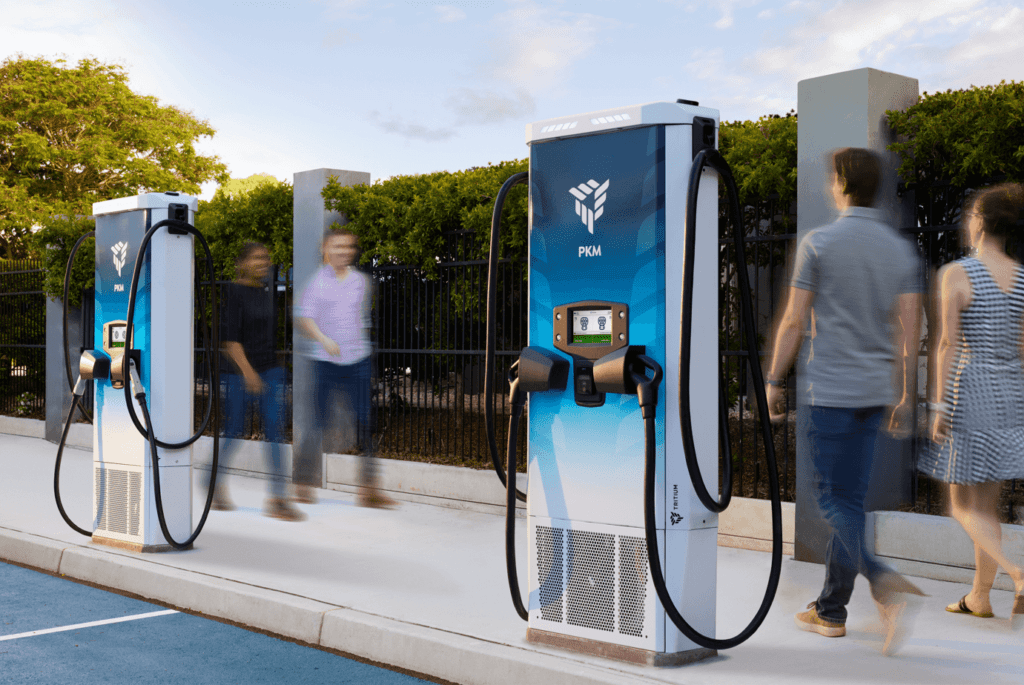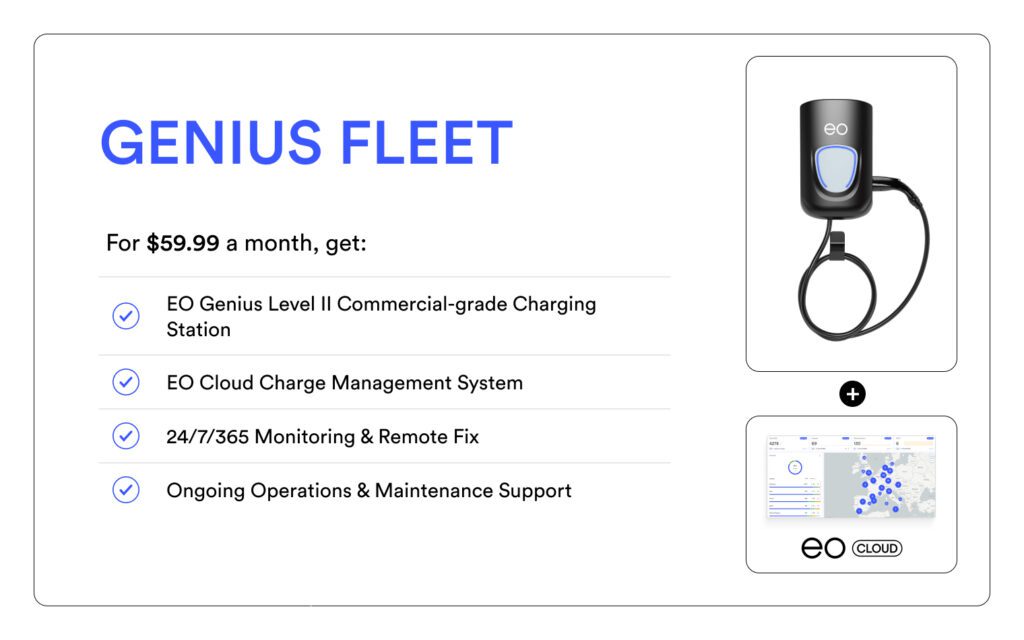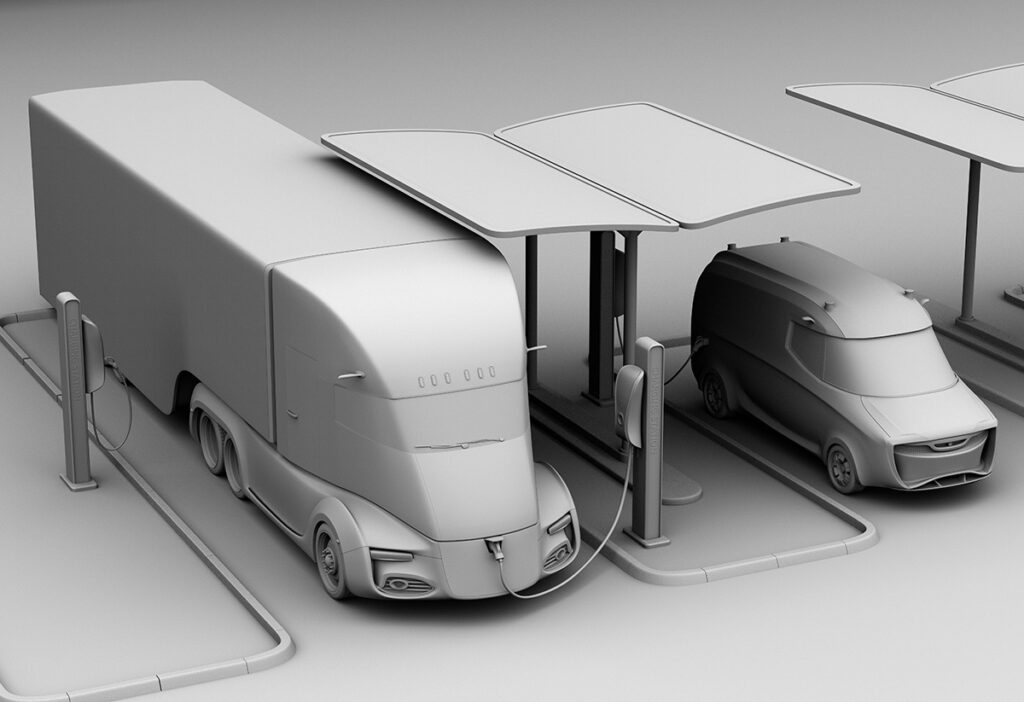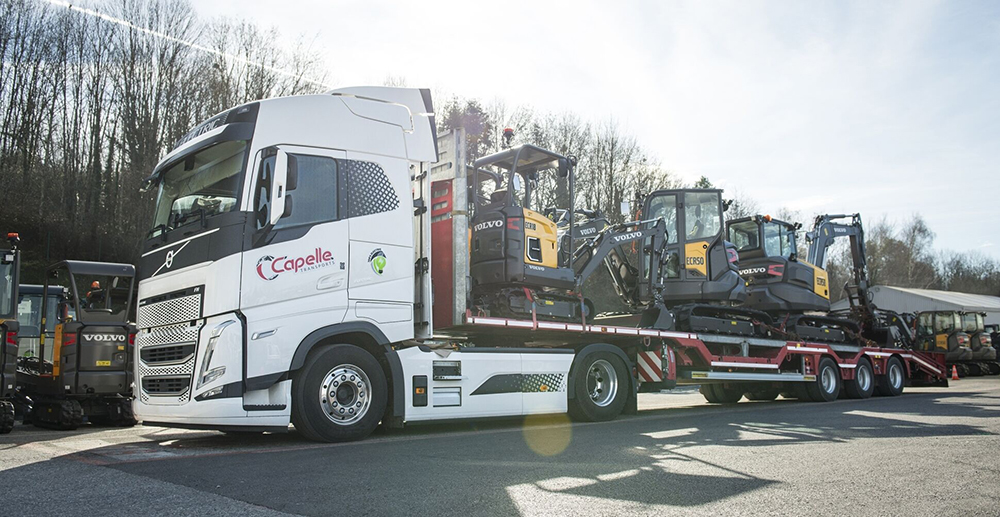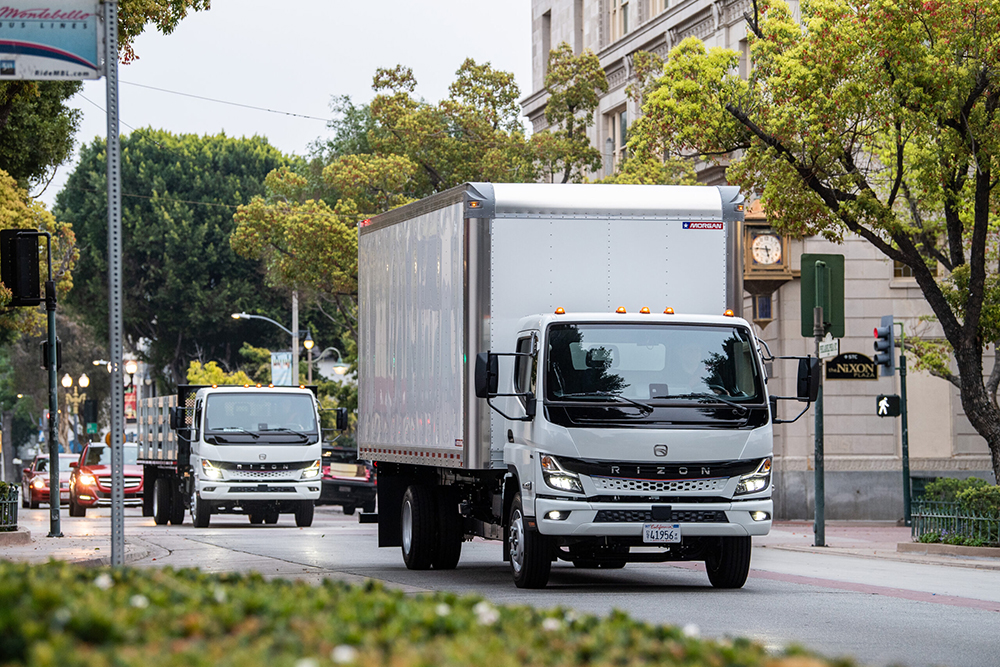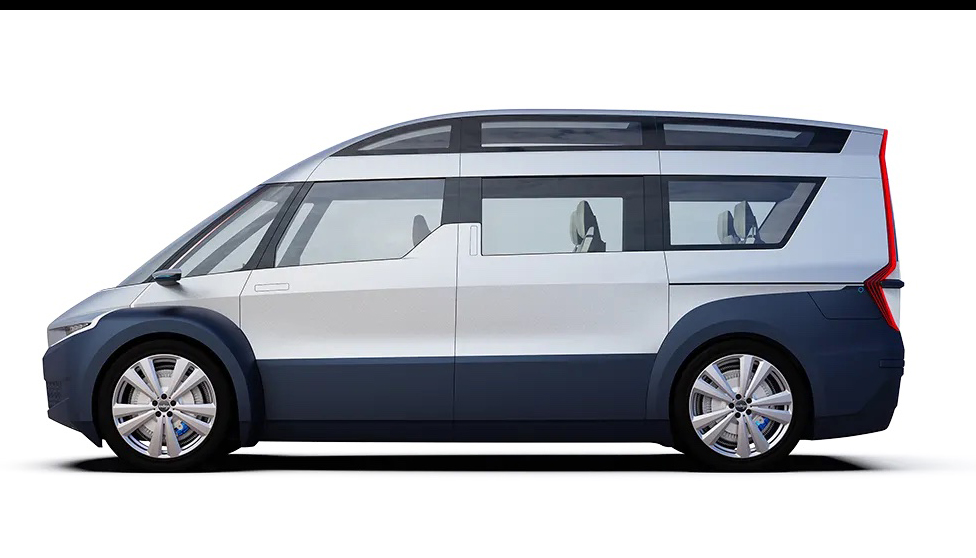- Some charging operators assume they need the highest-power DC chargers available, but it makes more sense to choose the right power levels for the use case of each specific charging site.
- By choosing the right product architecture, operators can serve more EVs with the same grid connection, delivering more efficiency and a better customer experience.
- Tritium is currently revamping its supply chain to make the sleek liquid-cooled DC fast chargers built at its new Tennessee factory compliant with NEVI and Build America regulations.
Q&A with Tritium Chief Sales Officer David Nicholl.
In any industry, savvy manufacturers know that success depends on more than just delivering hardware. The best companies work closely with their customers to help them choose the most cost-effective hardware for their specific needs. The EVSE industry is still young, and charger manufacturers and charge point operators are still working out some of the finer points of optimal charging station design.
Fast charger manufacturer Tritium has more experience than most—it’s been a going concern for over 21 years, and has gained valuable insights into how to tailor DC fast chargers for specific applications.
Charged spoke with Tritium Chief Sales Officer David Nicholl about building cost-effective EV charging sites that provide top-notch service to drivers.
Charged: When we started covering Tritium in 2011, the company was making a controller people used to build custom EVs. Shortly after that, your focus seemed to shift to DC fast chargers. Can you walk us through the company’s evolution?
David Nicholl: The three founding members were racing solar cars across Australia, and also got involved in battery management systems for the submarine James Cameron took down to the bottom of the Mariana Trench. Then they got involved in developing the first DC fast charger. They built this DC fast charger for one of their clients. It was IP 65-rated and liquid-cooled.
IP stands for ingress protection. That’s the elements like water and dust. When you get to 65, it’s a very, very high rating. It means it really keeps water and dust particles from getting in and destroying the components. Most of the DC fast chargers on the market are air-cooled. An air-cooled charger blows the air up through all the components and brings a lot of particles and moisture with it, so therefore they can degrade a lot more than ours can.
Because of the liquid cooling, they were able to get a smaller footprint and a better IP [ingress protection] rating, which means they can put the chargers close to the sea or in hot or cold conditions. So that’s the company. It’s grown from humble beginnings in Brisbane, Australia, launched itself on the NASDAQ, just opened a brand-new facility in Tennessee, which is going to have a capacity of up to about 30,000 units per year.
My background is in the electrification industry. I worked for companies like Rockwell Automation, Schneider Electric, Phillips Lighting and ABB. Got involved in e-mobility through ABB, was very excited about that. ABB were spinning off E-mobility, and at the same time, Tritium approached me for the global role.
Charged: Why is the footprint of a DC fast charger important?
David Nicholl: Land is expensive, so you want to use that land for parking facilities rather than for charging facilities. Our small footprint allows the car park operators and anybody else to maximize their parking capability and still have the charger power and availability they desire.


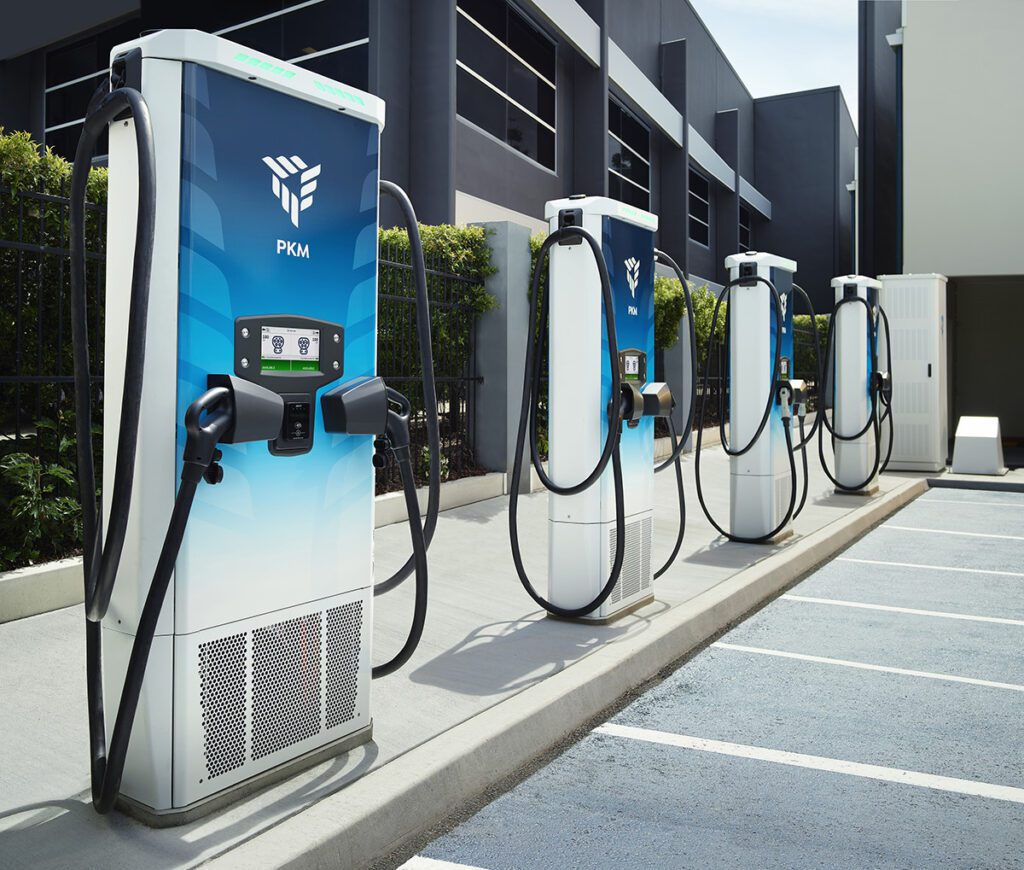

Charged: When it comes to building an EV charging site, there are different kinds of installations: public charging; workplace charging; fleet charging. How do the different use cases affect the site design?
David Nicholl: Basically, you can put a site anywhere where the car’s going to go. When you’re parking at home or at a car parking facility, that’s what we call destination charging, which can be hospital, retail, even commercial industrial buildings. Then you’ve got on-the-go charging, which is highway charging or urban charging where people can’t get home or can’t get to their destination, so they need a faster charging station, which takes less time to charge the car. And then of course there’s truck charging, industrial machinery or bus charging—that’s higher power. And then what we call fleet charging, which can be some of the hire car companies or Lyft or Uber, where it’s mainly destined for their own fleets.
A lot of people don’t understand that the main aspect is actually the car. It’s the car that decides how much power it’s going to pull from the charger. So first of all, to design a site, it’s really important to consider what types of vehicle you’re actually trying to charge. Some cars charge at 50 kilowatts, and it won’t matter if you have a 300-kilowatt or 400-kilowatt charger, they’ll still only charge at 50 kilowatts. Also on top of that is the charging curve, because it depends on when people come to the site to charge—if they come with 20 or 30% of the battery charge, or if they come with 90%, the charging curve really changes. So it’s really important to understand how EV batteries work. And of course it’s also the length of time that they want to spend. So first of all is designing for the car, then the land, where that space is going to be and where it’s close to.
If it’s near a retail facility or a convenience store, you want an appropriate level of charging to encourage the driver to spend a certain amount of time in the shop. You want them to spend maybe about 30 minutes, so in that case, we would probably be charging with what we call an RTM 75, providing up to 75 kW of power.
And then the faster charging, from 150 kW upwards, that’s really when you’re on the go, you don’t want to spend too much time and you want to focus on vehicle throughput. You want to take power from the grid, but at the same time maximize the availability of the chargers in the space. So when you’re designing that site, you might put in four chargers, each with two cables, which means eight cars can charge at any time, giving it high availability. Our product architecture enables the rectification unit, which would pull 300 kW from the grid, to deliver 150 kW to the four chargers. This we do using our load balancing algorithm, so it gives a ratio of 0.5 from the rectification unit, which is 300 kW.
The reason we do this is because we’ve analyzed a lot of the data, which we get through our chargers using our Pulse software management system. It’s rare to get eight cars with 20% battery remaining to turn up all at the same time on eight charging cables and pull more than 300 kW, because the average car on the market, the maximum that people charge between 30% and 80% is 150 kW. Most cars are charging below 150 kW. So we designed our system so that there won’t be that unused capacity.
Normally, what people would do is install say a 250 kW or 300 kW charger, because a Tesla Model 3 charges at 230 kW. The problem is that the Model 3 only starts off around 20%, 30%, and quickly goes down to 150 kW, then beyond that way down to 50 kW on the charging curve. So what we’re trying to do is create a scalable and modular architecture for our clients, where they can have more availability for their customers and less cost. Also, we transmit power across the site using a DC microgrid, which allows us to reduce the cabling costs of the system as opposed to running AC cables from the master distribution board right across to every charger in the field. This is the kind of architecture we’re trying to use to create a better experience for the users, because one of the biggest driver dislikes is turning up and having one charger and a queue. Also, they don’t like people hogging the charger. Most drivers say they would rather have less power and more availability than lots of power.
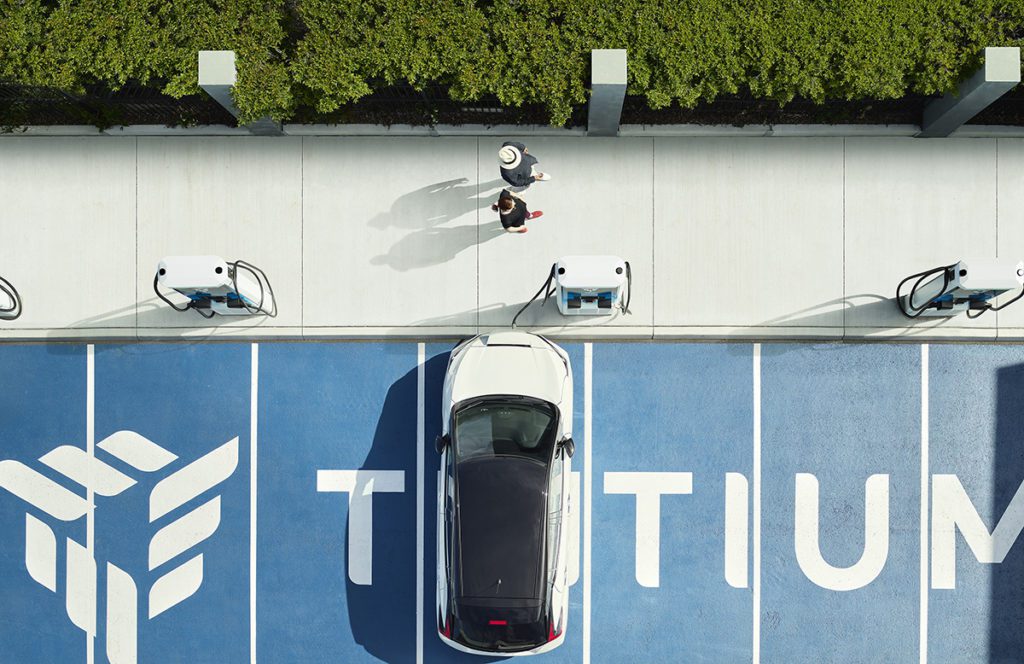

Charged: How does the site architecture change if a customer wants to install one versus a dozen DC fast chargers?
David Nicholl: We’ve got a couple of different styles of chargers. If it’s in a retail site, sometimes people just want a standalone charger, so the AC-to-DC conversion, the rectification, is inside the charger, and then there’s also a DC-to-DC component. For higher-powered projects we make a separation between the rectification unit, which is the AC-to-DC conversion, then a DC microgrid, and then the DC chargers. And the reason for that is that it allows us to modularize and scale the chargers on site, and it also allows us to reduce the total cost of ownership through this microgrid facility.
We’re a software company as well, and we design the algorithms for the load management system, and we design the software for the chargers, so we know where all the chargers are, what the utilization rate is, when they’re plugged in. We get a lot of data—if it’s live, or if somebody’s tampered with it, for example, if it’s knocked over. We’ve got tilt sensors and a lot of safety mechanisms that we can see through the data.
Charged: Some of your customers are very large firms, like Shell, BP, Ionity. Is that kind of the market that you’re targeting, or do you work with smaller operators too?
David Nicholl: No, we work with many different operators and many different segments of the market. But the biggest segments of the market for us are what we call fuel. We classify BP and Shell as historical fuel companies, then we classify other companies as charge point operators, and they’re normally fully dedicated. That’s all they’ve ever done. They’ve probably been a startup and have grown quite quickly. And then we would segment the market into utility companies or fleet companies. Now fleet companies can be delivery companies—they have depots and they would normally own and operate their own systems. So we sell ones and twos to people and we sell hundreds and thousands to people.
Charged: To clarify, a coffee shop operator or fleet owner, they are the customer for the CPO, and the CPOs are your customers.
David Nicholl: That’s correct. There’s a value stream along which we are manufacturing the hardware and we would sell that to a CPO, who would then add more value to that, such as the installation, the software, and then they would have their customers. Now of course, they can be their own customers because they can buy land and they can operate their own charging stations. So it depends where the land is and who owns the land.
We would classify a charge point operator as somebody who’s purchasing the hardware, then buying and selling the electricity. Whoever’s in charge of owning and running that machine. Of course you can do it yourself, but a lot of people choose not to because it’s not their core business. If you take somebody who owns a coffee shop or even a network of coffee shops, they want to get people to come in for 30 minutes to their shop, so it would be a great idea for them to charge electric cars. They can lease the land to put the charger on, they can get maybe a certain percentage of the electricity charge, but they don’t really want to run the charger. What happens if it fails? They’re not specialists in software, they’re not specialists as a charge point operator. So normally what they do is they subcontract that out or work in partnership with a charge point operator. That could be a utility company, it could be one of the historical fuel companies, or it could be a dedicated operator, which are mainly new startups in the market.
Charged: You’ve got a new factory in Tennessee, and a big topic for us here in the US is the new IRA, the BIL, the NEVI and the rest of the alphabet soup. For the chargers you’re going to be building in Tennessee, you obviously want to be compliant with all that, which will involve a lot of attention to your supply chain. Can you tell us about the challenges of that?
David Nicholl: Yeah, of course. Originally our product was made and designed in Brisbane and a lot of our supply chain was from the Asia/Pacific region, including Australia, but we buy components from suppliers in Europe as well. Moving to America has meant that, whilst we can continue to do that from the same suppliers, if we want to be NEVI-compliant and Build America compliant, we have to change our suppliers. Now, some have been easier to find and change, such as buying local steel, which is readily available, and actually can help reduce the price. But some of the components, for example electronics, can be much more expensive to buy locally.
So what it has meant is that there’s a cost difference from manufacturing non-compliant to manufacturing compliant chargers. We are designing the supply chain around being as compliant as we can, and we want to make sure that we’re meeting those targets. So yes, we plan to be compliant in 2023 for the NEVI and Build America chargers by sourcing local components.



